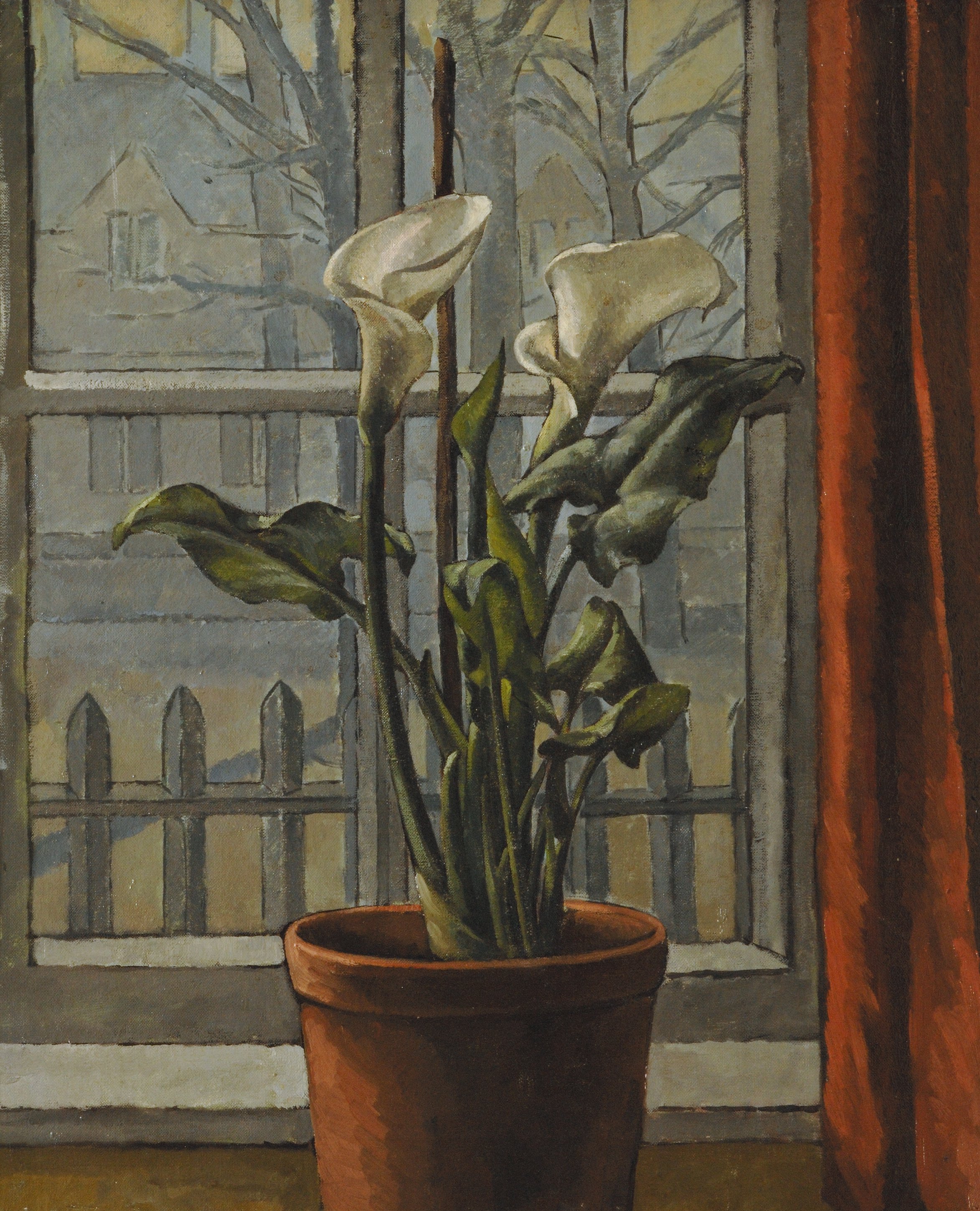12. Lilies, by Vera Ellen Poole
 Vera Ellen Poole, Lilies, oil on canvas, late 1920s, 61 x 51 cm
Vera Ellen Poole, Lilies, oil on canvas, late 1920s, 61 x 51 cm
In the mid- to late 1920s, Vera Ellen Poole (1890-1965) was
experimenting with different modes of painting: in the The Artist’s Mother and Jack, held at
the Ashmolean, her application of paint errs towards the impressionistic
with a strong contre-jour, use of black and a cut-off foreground figure that
recalls the work of contemporary British painter, Walter Sickert. In the two
other works held by St John’s, Cotswold Landscape and Forecourt, the brushwork moves
towards a more refined impressionism and an interest in pattern seems to be
emerging in the construction of intertwined branches in each.
In Lilies,
however, we are confronted by a dominating linearity. The canvas is both
divided and united by a use of outline that turns what is essentially a still
life into pattern and design. The use of the window and curtain is an
established composition, and yet Poole stalls the sense of looking-through or
the recession behind the object by painting the view in flattened, simplified
manner that brings the distinctive shapes of the buildings into conversation
with the grid of the window and the vertical stance of the lilies.
Lilies have a long history of symbolism in art, and in
placing the white lilies here next to a red curtain, Poole draws together the
histories of the red and white lily as symbolic of the sovereignty of kings, of
power, and also of innocence and purity – these latter associations connecting
the Virgin Mary and the lily from the middle ages onwards. The combination of
this traditional motif with the modernity of the gridded construction of the
composition is part of what makes this painting compelling. Set against the
characteristic shapes of college buildings, and almost trapped by the lines of
the window, the fence, and even the tree branches which seem to cage the plant,
the lilies have a serenity as they reach upwards.
In this reading, the image is a sad echo of Poole’s own situation.
Clearly, she was talented painter experimenting with styles emerging around
her. And yet she had little chance to pursue these experiments. When these
works were painted she was married to Austin Lane Poole, who was a history tutor at
St John’s College from 1913 and College President 1947 to 1957. His disapproval
of her art led to its end, after a mere eight years. (Dr Juliana Dresvina, who
recently worked on digitising the St John’s collection records, will be telling
this sad and shameful story, with new details from the family, in her
contribution to an edited volume she is publishing soon with Bloomsbury Academic.) Her daughter, Catherine Dupre, gave these paintings to St John’s in
the 1980s, over twenty years after her mother’s death. They are indications of what
might have followed, but they also deserve our attention in their own right.
Vera Ellen Poole is also mentioned here, along with a number of other significant women at St John's.
View the painting on Art UK here.
 Dr Jennifer Johnson, Junior Research Fellow in History of Art
Dr Jennifer Johnson, Junior Research Fellow in History of Art